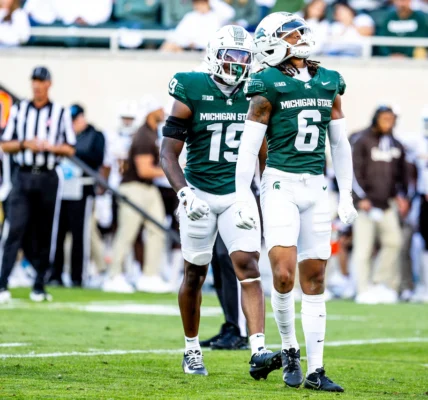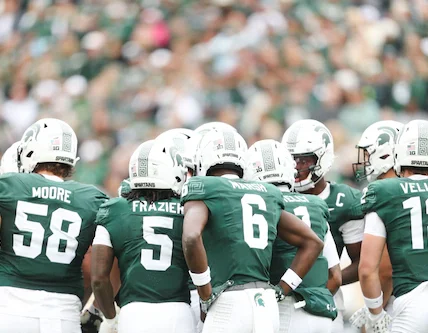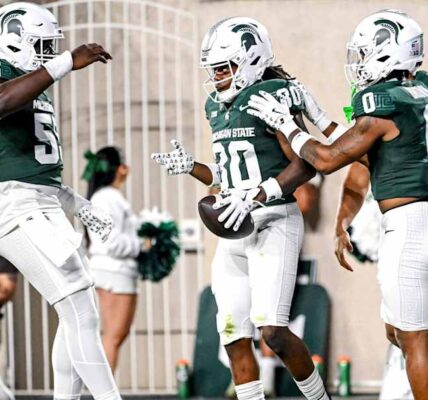Michigan men’s basketball coach Dusty May embraces an uptempo style. Last season, the Wolverines frequently pushed the ball in transition, capitalizing on their lineup’s speed to advance past half-court and generate early looks. In fact, now-No. 7 Michigan ranked fourth in the Big Ten in tempo, averaging 70.7 possessions per 40 minutes.
That quick pace often forced opposing defenses to scramble, preventing them from setting up properly. In turn, this typically produced open looks and high-volume 3-point opportunities. With big men capable of spacing the floor, the Wolverines had the tools to fire away efficiently from deep.
Ironically, Michigan faltered from distance, converting only 33.2% of its 3-pointers — ranking 220th nationally and 13th in the Big Ten.
“I still have a little PTSD from our shooting droughts in February,” May said on Sept. 30 during Michigan Media Day. “I check our 3-point numbers every single day.”
Michigan boasts players capable of hitting shots consistently from outside. Last season, graduate guard Nimari Burnett paced the team, sinking 40% of his attempts from beyond the arc. Graduate forward Will Tschetter has also proven reliable from long range, stretching defenses over the past two seasons. Freshman guards Trey McKenney and Winters Grady enter with strong reputations as perimeter threats. If this depth in shooting translates to live games, cycling these players in and out could boost Michigan’s overall efficiency.
“We kind of expected Nimari and Will to be our go-to shooters,” assistant coach Drew Williamson said. “Winters Grady can really score it. Trey McKenney too. (Graduate forward Yaxel Lendeborg) and (junior guard Elliot Cadeau) have been knocking shots down. (Senior guard) Roddy Gayle as well. Those guys have come in and shot the ball well — and that builds confidence.”
That shooting confidence was exactly what Michigan lacked late last season. In critical matchups, their outside shots simply didn’t fall.
In the regular-season finale versus Michigan State, the Wolverines hit just 3-of-24 threes, losing by 17 points. They faced a similar outcome in the Sweet Sixteen loss to Auburn, where they went 18 minutes without a 3-pointer, missing all five attempts before then-freshman L.J. Cason finally connected with 45 seconds left — long after the game was decided.
Since that season-ending defeat, improving perimeter shooting has become a top priority. For Cadeau, that’s meant refining his catch-and-shoot mechanics. Tschetter has focused on a quicker release, while the staff is helping sophomore forward Morez Johnson Jr. develop a perimeter shot after not attempting a single 3-pointer at Illinois last year.
If the coaching staff’s optimism about the team’s shooting proves correct, Michigan could avoid the type of heartbreaks that plagued last season. A reliable outside game would allow the Wolverines to diversify their offense, moving away from isolation plays and inside-heavy scoring.
For Michigan, last season’s 3-point struggles loomed large as the year closed. By zeroing in on consistent perimeter production, the Wolverines believe they can finally turn that weakness into a strength.



